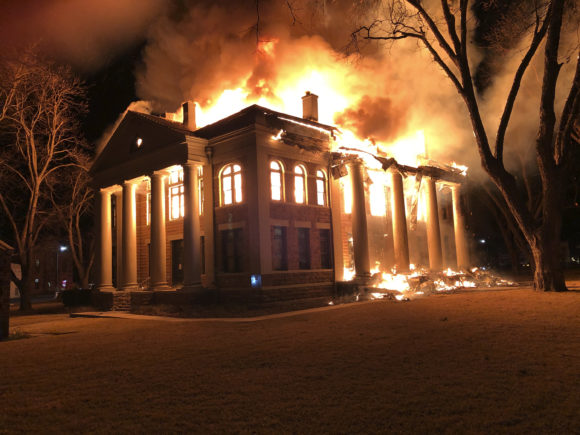An organization founded more than 40 years ago to combat arson as a method of insurance fraud decided that its mission has been accomplished and folded up shop last month.
All of the resources of the Insurance Committee for Arson Control were passed along to the National Association of Mutual Insurance Companies, which will use remaining funds to fund scholarships for students pursuing college fire science degrees. NAMIC will also provide access to ICAC’s online training and education tools for arson investigators.
Statistics show that commercial arson losses in the US declined by about half from 2009 to 2018, the latest year for which statistics are available. However, 2020 may have brought an unprecedented amount of arson damage due to rioting associated with the police killing of George Floyd.
Verisk’s Property Claim Services estimated civil unrest in the US caused some $2 billion in damages last summer, although that estimate includes damages caused by looting, vandalism and other acts of destruction.
Gregg Dykstra, a former board member for ICAC and chief operating officer for NAMIC, explained in an email that ICAC focused on arson as a means of insurance fraud, not fires provoked by social unrest or catastrophic wildfires that are sometimes set intentionally.
“The ICAC Board was confident that insurance-related arson had been sufficiently addressed through the work of the ICAC that a dissolution of the organization was warranted,” he said. “There are pieces of incendiary fire/arson information that help substantiate that judgment, but objective and hard data specifically addressing arson as an insurance fraud issue is hard to come by directly and fully.”
Dykstra said ICAC was born during the 1970s while the insurance industry lobbied for passage of immunity laws to protect persons who report arson from civil actions. “Those praiseworthy efforts and accomplishment were well before our involvement at ICAC,” he said.
The FBI’s Unified Crime Reports, which note the number of crimes reported to participating local law enforcement agencies, shows a steady decline of reported arsons. There were 41,376 in US in 2015 but only 32,358 in 2019.
According to the National Fire Protection Agency, the frequency of intentional non-residential structure fires remained relatively flat from 2009 to 2018, ranging from 8,500 in 2010 to 10,900 in 2017. Total dollar losses, however, dropped from $363 million to $163 million during that period.
NFPA data shows the number of intentional fires to residential buildings declined from 16,200 in 2009 to 15,900 in 2018. Losses declined from $688 million to $557 million annually during that year, but spiked in 2017 at $757 million.
An NFPA research paper explains that “intentional” does not necessarily mean arson, which requires criminal intent. Some jurisdictions have a minimum age below which a person cannot be charged with arson. Also, in some jurisdictions, a person can legally set a fire to destroy his or her own property.
The ICAC’s latest available tax form, filed in 2019, shows the organization had modest resources. The Form 990-EZ shows the committee collected $40,903 in revenue for 2018, primary from membership dues. It reported a $26,230 deficit that year, but still held $120,683 in net assets.
The ICAC’s primary activity was educational webinars. The tax form says 361 people registered for its webinars in 2018 and 46 attended its annual national seminar.
About the photo: This photo provided by Mason County Judge Jerry Bearden shows a fire at the Mason County Courthouse, Thursday, Feb. 4, 2021, in Mason, Texas. An official says a suspect has been taken into custody following the massive fire. (Mason County Judge Jerry Bearden via AP)
Was this article valuable?
Here are more articles you may enjoy.


 OpenAI And Microsoft Sued Over Murder-Suicide Blamed on ChatGPT
OpenAI And Microsoft Sued Over Murder-Suicide Blamed on ChatGPT  Munich Re: Insured Losses From Wildfires, Storms and Floods Hit Record High
Munich Re: Insured Losses From Wildfires, Storms and Floods Hit Record High  The Return Period for An LA Wildfire-Scale Event May Be Shorter Than You Think
The Return Period for An LA Wildfire-Scale Event May Be Shorter Than You Think  First Brands Judge Approves Examiner to Probe Fraud Allegations
First Brands Judge Approves Examiner to Probe Fraud Allegations 